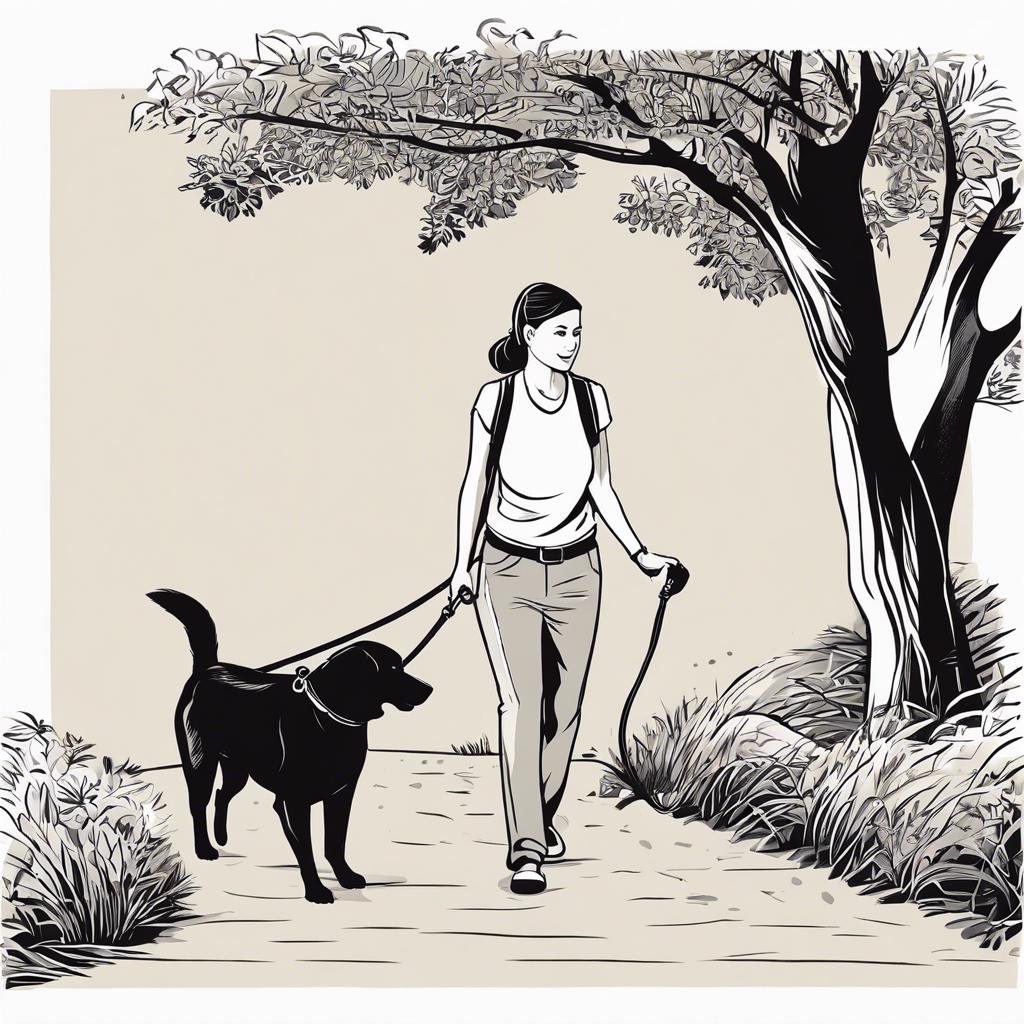# Training Your Furry Friend: Mastering the Art of Walking on a Loose Leash
Training your dog to walk on a loose leash is an essential skill that benefits both you and your canine companion. Not only does it make walks more enjoyable, but it also promotes better behavior and strengthens the bond between you and your furry friend. So, if you’re tired of being pulled down the street or having your arms wrenched, it’s time to embark on a training journey that will transform your daily walks into a harmonious stroll. Get ready to learn the secrets to leash-walking success!
## Understanding the Basics
The concept of loose leash walking is simple: your dog should walk by your side, with the leash hanging loosely, neither straining nor pulling. This relaxed manner of walking demonstrates that your dog is responding to your guidance and not leading the way. Achieving this requires patience, consistency, and positive reinforcement—the cornerstones of effective dog training.
Before you begin, it’s crucial to ensure you have the right tools for the job. Opt for a standard flat leash, around 4 to 6 feet long, made from nylon or leather. Avoid retractable leashes, as they can encourage pulling and make training more challenging. As for collars, a standard buckle collar or a front clip harness is ideal for this training.
## Getting Started: Setting the Stage for Success
Begin your training in a quiet, familiar environment, free from distractions. Your backyard or a quiet room in your home is ideal. Start with short training sessions, around 5-10 minutes each, several times a day. Consistency is key, so aim to practice daily.
## Step-by-Step Training Guide:
### 1. The ‘Let’s Go’ Command:
Introduce your dog to the command that signals the start of your walk. Use a cue like ‘Let’s go’ or ‘Walk time’ in a cheerful tone. Start walking and encourage your dog to follow you by moving forward in a relaxed manner.
### 2. Reward Good Behavior:
Every time your dog walks by your side with a loose leash, praise them enthusiastically and offer a tasty treat. This positive reinforcement will make them eager to repeat this behavior.
### 3. Stop and Redirect:
If your dog starts to pull on the leash, simply come to a slow stop. Wait patiently until your dog stops pulling and looks back at you. As soon as the leash loosens, praise them and offer a treat, then continue walking.
### 4. Change Direction:
To keep your dog engaged and attentive, vary your walking path. Turn left or right, or even make a U-turn. This teaches your dog to pay attention to you, as they never know when you might change direction.
### 5. Introduce Distractions Gradually:
Once your dog masters loose leash walking in a quiet environment, gradually introduce distractions. Practice in different areas of your home, then move to your garden or a quiet street. Gradually increase the level of distraction as your dog improves.
## Troubleshooting Common Challenges:
– **Strong Pulling:** If your dog pulls excessively, consider using a no-pull harness or head halter, which can provide more control during training.
– **Lack of Focus:** If your dog struggles to focus, reduce distractions and practice in quieter areas. Use higher-value treats to keep their attention.
– **Slow Progress:** Training takes time, so be patient and consistent. Break the training process into smaller, achievable goals, and celebrate each milestone.
## Advanced Tips for Success:
– **Consistency is Key:** All family members who walk the dog should use the same training techniques. Inconsistency can confuse your dog and hinder progress.
– **Use Verbal Markers:** Introduce a verbal marker like ‘Yes!’ to signal to your dog when they’ve done something right, followed by a reward.
– **Practice in Different Environments:** Once your dog is proficient in loose leash walking, practice in various settings (busy streets, parks) to reinforce the behavior.
## The Benefits of Loose Leash Walking:
– **Enhanced Safety:** Loose leash walking reduces the risk of accidents caused by pulling, ensuring a safer experience for both you and your pet.
– **Better Behavior:** This training teaches your dog to focus on you, improving overall behavior and responsiveness.
– **Bonding and Trust:** By working together to master this skill, you’ll foster a stronger bond and trust between you and your dog.
## Conclusion:
Training your dog to walk on a loose leash is a rewarding process that requires patience, consistency, and positive reinforcement. It transforms walks from a stressful tug-of-war into a delightful shared experience. Remember, each dog is unique, so tailor your training to their individual needs and learning style. Enjoy the journey and celebrate every small victory along the way!
With dedication and the right approach, you’ll soon be proudly strolling with your dog, both of you enjoying the walk to the fullest. Happy training and happy walking!

